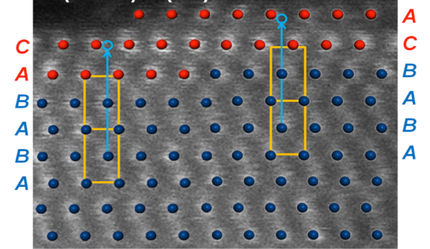The beginning of a new era in resolution
World record: Team of researchers has succeeded in achieving the world's highest electron microscope resolution to date
Scientists at Cornell University (USA) have succeeded in building an electron microscope pixel array detector (EMPAD) with sophisticated 3D reconstruction algorithms that make it possible to multiply the resolution of a state-of-the-art electron microscope. The Leibniz-Institut für Kristallzüchtung provided the decisive material for this world record, which was set using a high-performance detector.

Symbolic image
pixabay.com/Unsplash
Cornell University research group leader David Muller emphasises that this marks the beginning of a new era in resolution. Not only has an entry been made in the Guinness Book of Records, but this method opens up a whole new range of measurement possibilities for things that researchers have long wanted to do. "We basically can now figure out where the atoms are in a very easy way. It also solves a long-standing problem that has prevented us from doing so in the past - the cancellation of multiple scattering of the beam in the sample, as outlined by Hans Bethe in 1928," Muller said.
The crucial material for developing this method was grown at the IKZ and made available to the researchers. The crystalline material praseodymium orthoscandate (PrScO3) is characterised in particular by a small distance between the praseodymium atoms (only 59 pm), so that the resolution can be well demonstrated on these "praseodymium pairs". In other words, the resolution must be better than 59 pm if both atoms can be detected. On the other hand, praseodymium is a very heavy atom (140.9 u), which in turn leads to a particularly good resolution, because heavy atoms "vibrate" less in space. In addition, the weight of scandium is in the middle (44.9 u) and oxygen is very light (15.9 u), so that with these three types of atoms one can already make many indications about the usefulness of the method for other elements in the periodic table. Worldwide, the IKZ is the only research institute that can grow the material with the required purity and perfection.
Original publication
Original publication
Zhen Chen et al.; "Electron ptychography achieves atomic-resolution limits set by lattice vibrations"; Science 21 May 2021
Organizations
Other news from the department science

Get the chemical industry in your inbox
By submitting this form you agree that LUMITOS AG will send you the newsletter(s) selected above by email. Your data will not be passed on to third parties. Your data will be stored and processed in accordance with our data protection regulations. LUMITOS may contact you by email for the purpose of advertising or market and opinion surveys. You can revoke your consent at any time without giving reasons to LUMITOS AG, Ernst-Augustin-Str. 2, 12489 Berlin, Germany or by e-mail at revoke@lumitos.com with effect for the future. In addition, each email contains a link to unsubscribe from the corresponding newsletter.



























































